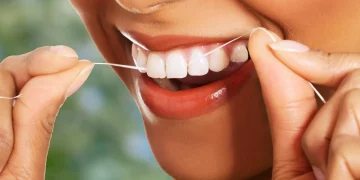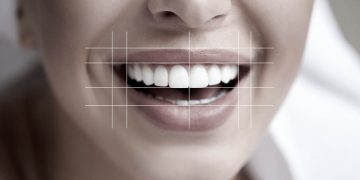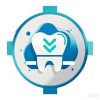Introduction
Brushing your teeth is a fundamental part of daily life. It’s a habit we begin in childhood, but do we really know the right way to brush? Many people brush their teeth without giving it much thought, assuming that the act of brushing is sufficient for good oral health. However, brushing effectively requires more than just applying toothpaste and scrubbing. Proper technique, the right timing, and maintaining consistency are all crucial factors in achieving and maintaining optimal oral hygiene.
In this article, we’ll explore the correct brushing techniques, the importance of brushing twice a day, and how to avoid common brushing mistakes. You’ll learn not only how to improve your technique but also why it matters and how brushing plays a pivotal role in overall oral and even systemic health.
Section 1: Why Is Brushing Important?
1.1 The Role of Plaque in Oral Health
Brushing your teeth isn’t just about cleaning them; it’s about protecting them from plaque buildup. Plaque is a sticky film of bacteria that accumulates on the surface of your teeth. Every time you eat or drink, the bacteria in your mouth feed on sugars and starches left behind, producing acids that attack your tooth enamel.
If plaque is not regularly removed by brushing, it hardens into tartar (also known as calculus). Tartar is much more difficult to remove and requires professional cleaning from a dentist or hygienist. Over time, plaque and tartar buildup can lead to cavities, tooth decay, gum disease, and even tooth loss.
1.2 Preventing Gum Disease
Proper brushing isn’t just about preserving your teeth — it’s also about keeping your gums healthy. Gum disease, or periodontal disease, starts with a condition called gingivitis, which is inflammation of the gums. Gingivitis occurs when plaque builds up along the gumline, irritating the tissue. Symptoms of gingivitis include red, swollen gums that may bleed when brushing.
If left untreated, gingivitis can develop into more severe forms of gum disease, such as periodontitis, which can cause damage to the bone structure around your teeth. Brushing effectively helps prevent plaque accumulation, reducing the risk of gum disease.
1.3 Impact on Bad Breath
Bad breath (halitosis) is often caused by bacteria in the mouth. These bacteria thrive on food particles and plaque buildup, especially on the tongue and between the teeth. Regular brushing removes food debris and bacteria, helping to eliminate bad breath and keep your mouth feeling fresh.
Additionally, brushing your tongue, which can harbor bacteria, is an often-overlooked part of good oral hygiene.
1.4 Oral Health and Systemic Health
The benefits of brushing go beyond your mouth. Recent research has shown that poor oral health can have a significant impact on overall health. Gum disease has been linked to various systemic conditions, including heart disease, diabetes, and stroke. The bacteria from infected gums can enter your bloodstream and affect other parts of your body.
Maintaining good oral hygiene by brushing twice a day not only keeps your smile beautiful but also reduces your risk of developing these systemic conditions.
Section 2: Anatomy of Your Mouth – Understanding What You’re Brushing
To brush your teeth effectively, it helps to understand the anatomy of your mouth. Your teeth, gums, and soft tissues are all connected and require specific care.
2.1 Types of Teeth
Your mouth contains several different types of teeth, each with a specific function:
- Incisors: The four front teeth in both the upper and lower jaw, used for cutting food.
- Canines: Pointed teeth next to the incisors, used for tearing food.
- Premolars: Flat-topped teeth used for grinding and tearing food.
- Molars: Larger, flat teeth located at the back of the mouth, designed for grinding food into smaller particles for easier digestion.
Each of these teeth has a different surface and may require slightly different brushing techniques to clean effectively.
2.2 Gums and Soft Tissues
Your gums (gingiva) surround and support your teeth. Healthy gums are firm and pink, whereas unhealthy gums can become red, swollen, and may bleed when brushing. Plaque accumulation along the gumline is a common cause of gingivitis, so it’s essential to angle your toothbrush toward your gums during brushing.
Other soft tissues in your mouth, like the roof of your mouth and your tongue, also play important roles in oral health. The tongue, in particular, harbors bacteria and food particles, which can contribute to bad breath if not cleaned properly.
Section 3: How to Brush Your Teeth Correctly
Brushing your teeth isn’t just about brushing — it’s about how you brush. Here are the steps you need to follow to ensure you’re brushing your teeth properly:
3.1 Choosing the Right Toothbrush
Selecting the right toothbrush is crucial for effective cleaning. The ideal toothbrush should have:
- Soft Bristles: Soft bristles are effective at cleaning teeth while being gentle on gums and enamel. Medium and hard bristles can cause damage to gums and wear down tooth enamel over time.
- Small Brush Head: A smaller head allows you to reach all parts of your mouth, including the back teeth, without difficulty.
- Electric vs. Manual: Both electric and manual toothbrushes can be effective, but electric toothbrushes have been shown to reduce plaque more efficiently, especially for those with limited dexterity.
3.2 The Correct Brushing Technique
Proper brushing isn’t just about moving the brush back and forth. Here’s how to ensure you’re using the right technique:
- Angle Your Brush: Position your toothbrush at a 45-degree angle toward your gumline. This angle helps you clean both the teeth and the area where the tooth meets the gum, which is a common site for plaque buildup.
- Use Gentle, Circular Motions: Instead of scrubbing aggressively, use small, gentle circular motions to remove plaque. Vigorous scrubbing can cause gum recession and enamel erosion.
- Clean All Tooth Surfaces: Brush the outer surfaces, inner surfaces, and chewing surfaces of all your teeth. Don’t forget to brush the inside of your front teeth by tilting the brush vertically and making up-and-down strokes.
- Don’t Forget Your Tongue: Bacteria can accumulate on the surface of your tongue, contributing to bad breath. Gently brush your tongue, starting from the back and moving toward the tip, to remove bacteria and food particles.
3.3 Timing and Frequency
The American Dental Association (ADA) recommends brushing for at least two minutes twice a day. Many people brush too quickly, spending less than a minute on their teeth, which is not enough time to remove all plaque.
- Morning Brush: Brushing in the morning removes the bacteria that have built up in your mouth overnight.
- Night Brush: Brushing at night ensures that you remove the day’s buildup of food particles and plaque before going to sleep. This helps prevent plaque from turning into tartar.
3.4 When to Brush
You should wait at least 30 minutes after eating acidic foods or drinks (like citrus or soda) before brushing. Acidic foods soften tooth enamel, and brushing immediately afterward can damage the enamel.

Section 4: Common Mistakes to Avoid While Brushing
Even though brushing is a relatively simple task, many people still make mistakes that can harm their oral health. Here are some common errors to avoid:
4.1 Brushing Too Hard
Some people think that brushing harder will clean their teeth better. In reality, brushing too hard can cause gum recession, wear down enamel, and damage tooth surfaces. Use gentle, circular motions instead of scrubbing.
4.2 Not Brushing Long Enough
Brushing for just a few seconds doesn’t allow enough time to remove all the plaque from your teeth. Aim for two minutes of brushing, ensuring that each quadrant of your mouth gets equal attention.
4.3 Skipping the Gumline
The gumline is one of the most critical areas to clean, as plaque tends to accumulate there. Make sure you brush along the gumline, gently massaging the gums with the toothbrush bristles.
4.4 Not Replacing Your Toothbrush
A worn-out toothbrush is less effective at cleaning. Replace your toothbrush every 3-4 months, or sooner if the bristles are frayed.
Section 5: The Role of Fluoride and Toothpaste
Fluoride is a key ingredient in most toothpaste because it helps to strengthen tooth enamel and fight cavities. When you brush with fluoride toothpaste, the fluoride gets absorbed into the enamel, making it more resistant to decay.
Choosing the right toothpaste is also important. Some people may need a toothpaste designed for sensitive teeth, while others may benefit from toothpaste that targets tartar control or whitening.
Conclusion
Brushing your teeth properly is one of the simplest yet most effective ways to maintain oral health. By following the correct brushing techniques, using the right toothbrush, and brushing for the right amount of time, you can significantly reduce your risk of cavities, gum disease, and bad breath.
Remember, brushing twice a day is the cornerstone of good oral hygiene. Complement it with flossing, regular dental checkups, and a healthy diet to ensure a lifetime of healthy smiles.













































Discussion about this post